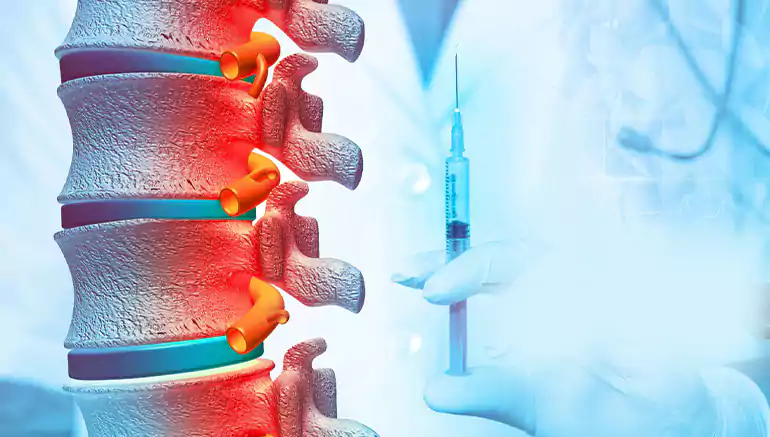
Herniated or slipped disc pressing on nerves, causing back and leg pain, numbness, and weakness.
Also known as a herniated, ruptured, or slipped disc, this condition occurs when the soft, gel-like nucleus pulposus located in the center of an intervertebral disc protrudes or extrudes through a tear or weakness in the tough outer layer called the annulus fibrosus. This protrusion can then compress or irritate nearby spinal nerves or the spinal cord itself, leading to a variety of symptoms. Disc prolapse is most common in the lumbar spine (lower back) but can also occur in the cervical spine (neck). The symptoms often include significant back pain that may radiate into the buttocks and down the leg (sciatica) if a nerve in the lower back is affected, or into the shoulder and arm if a nerve in the neck is involved. Other symptoms can include numbness, tingling, muscle weakness, and reflex changes in the affected limb. The severity of symptoms can vary greatly depending on the size and location of the herniation and the degree of nerve compression. Diagnosis typically involves a physical examination, a neurological assessment to evaluate reflexes, strength, and sensation, and imaging studies such as MRI scans, which are highly effective in visualizing the soft tissues of the spine, including the intervertebral discs and nerve roots. CT scans may also be used in some cases. Treatment for disc prolapse often begins with conservative measures aimed at reducing pain and inflammation and allowing the body's natural healing processes to occur. These may include rest, pain medications (over-the-counter and prescription), nonsteroidal anti-inflammatory drugs (NSAIDs), muscle relaxants, physical therapy to strengthen core muscles and improve flexibility, and epidural steroid injections to reduce inflammation around the affected nerve root. A significant majority of individuals with disc prolapse experience improvement with conservative treatment over several weeks or months. However, in cases of severe or persistent symptoms that do not respond to conservative management, or if there is progressive neurological deficit such as significant muscle weakness or loss of bowel or bladder control (cauda equina syndrome), surgical intervention may be considered. Surgical options can include microdiscectomy, a minimally invasive procedure to remove the portion of the herniated disc that is compressing the nerve, or laminectomy, a procedure to remove a portion of the vertebral bone to create more space for the nerve. Rehabilitation after surgery is important to regain strength and function.